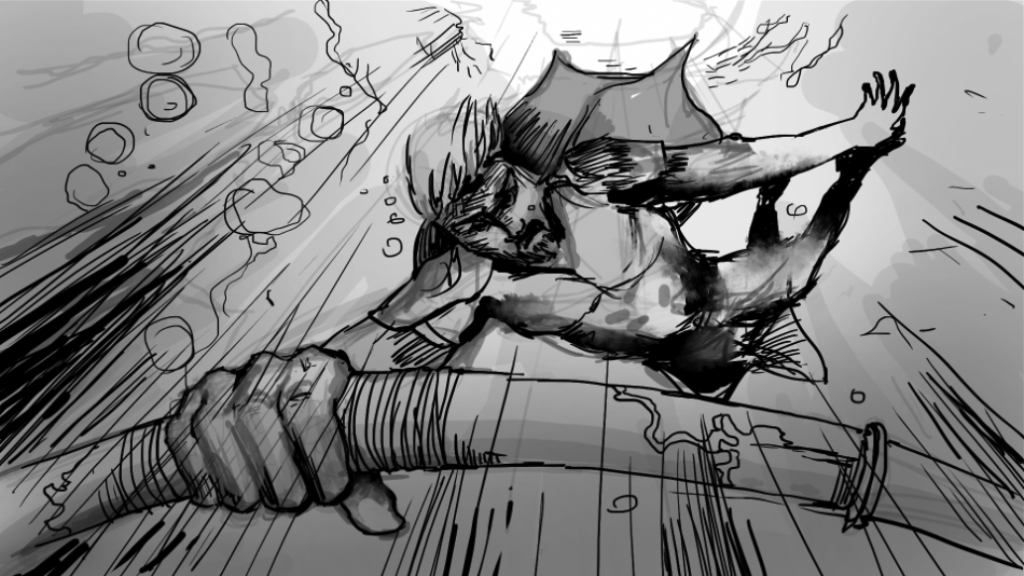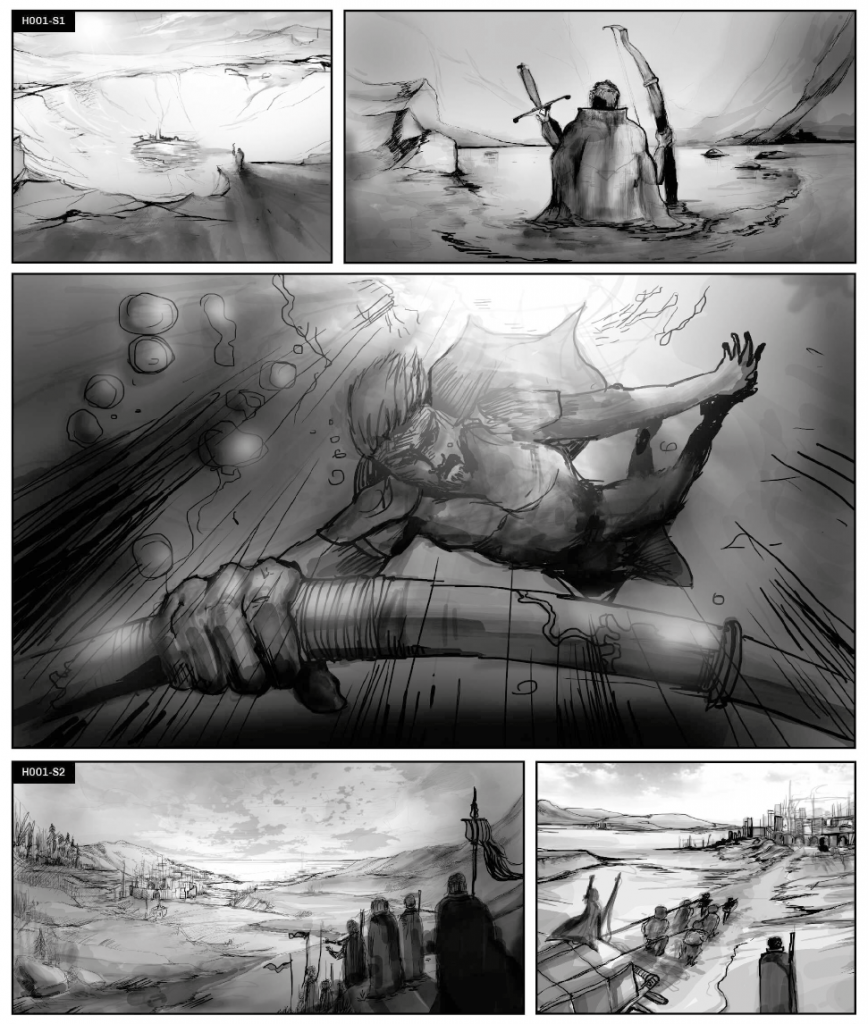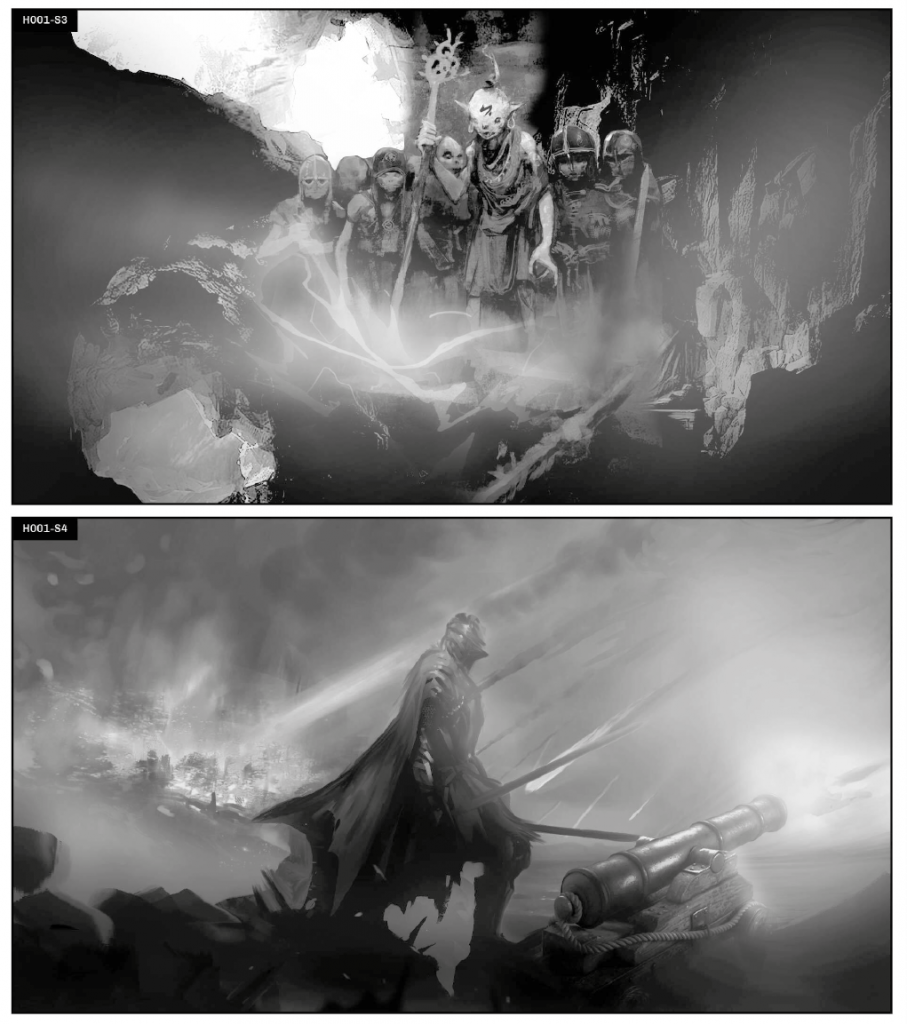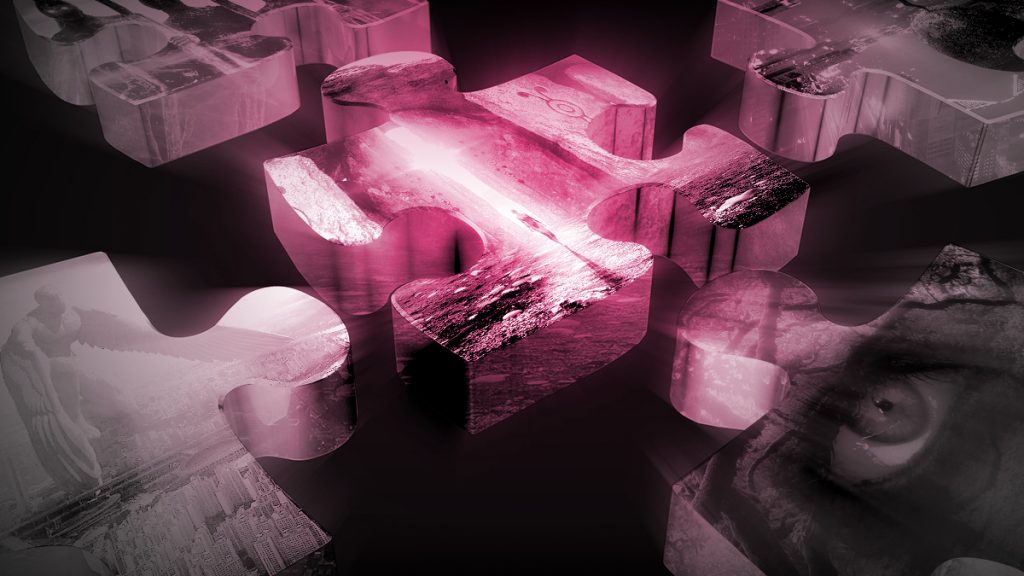The Department of Arts and Creations has been diligently working on the Government Land stories of Arcadian Lore. To date, works of art have been published for the Isle of Talos, encompassing regions H001, H002, H003, and H004. This paper will focus on District H001, the story of “Kempe’s Humility.”
Each district is assigned a text snippet that outlines the expected storyline and must be adhered to when producing the artwork. The LDHNS ensures that each story is part of a grand narrative, making every story in Arcadia both consistent and unique. Paintings may be presented in any form, static or motion.
A Comic style rendering in Black and White was chosen for Government Land districts owned by the administration, partners, ambassadors, and curators. As an Anime Manga enthusiast, I drew upon my knowledge to create a scene that accurately conveyed the story and its intended climax.
What makes a great story artwork?

In my experience, the following are key ingredients:
- Story
- Geography
- Perspective
- Art Technique
This structure could accommodate many more base elements. However, the key ingredients ensure a solid foundation for your artistic process. The outcome should be in alignment with the initial plot description.
Story
By understanding the epoch and narrative of the region, one can connect the character’s actions and the emotions evoked. Is it a narrative that predominantly relies on description? Is there a conflict present? Or is it a straightforward conversation taking place at a diner table? The story itself is paramount; thus, it is vital to comprehend every element.

H001-1 Description:
Kempe is a powerful deity who held an impressive bow, Niefels Bane. This bow was cast into Hell’s Bucket, blocking its power and bringing tranquility. Kempe’s might and grace were unparalleled, and he used the bow to bring peace and safety to the land. It is important to remember this tale of a divine being who used their strength for the betterment of others and to pass it down through the generations.
What do we take from this description?
From the snippet above, I see Kempe as the protagonist, and the goal behind his action is to secure the world through “Niefels Bane .”Here, the artist can interpret the action independently since narrating the description is quite complex. The artist’s task is to allow the viewer to navigate the scene swiftly.
Rather than present the protagonist’s action, I portrayed Kempe dropping the “bow” into the deep waters of Hell’s Bucket. Additionally, storyboarding allowed us to introduce the moment’s seriousness in the first frame and the last frame showing a “positive” aftermath (the Defeat of Annuler).
Geography
As one progresses, one should be able to locate the story’s setting within their district. Considering the district’s topography, weather conditions, and surrounding environment is essential. For example, is the district located near a river? Could the story be situated on a mountaintop or cliff? By optimizing the location, one can create an engaging narrative.
For instance, in the case of “Kempe’s Humility,” we can discern that the scene is located around the edge of Hell’s Bucket, in the center of H001, Isle of Talos. Additionally, elements of earth and water are significant components of the story.
Perspective
Once the story and location are comprehended, the narrative frame can be envisioned. This involves determining the direction or coordinates from which the story is being viewed. For a storyline to be considered valid, the distance between the scene and the point of view must be proportionately placed within the vicinity. This can then be represented as a pin on a map.
Art Technique

Concerning their artistic technique, the possibilities are virtually limitless. From traditional drawings to digital paintings, one can effectively convey their story through the following steps: understanding the light source, gridding the canvas, sketching, and selecting the right color palette. Understanding the source of light is fundamental, as it will direct the composition and enable one to segment their grid for improved eye movement. Gridding the canvas can be done in various layouts and grid systems to ensure elements are situated in an appropriate space; for instance, the rule of thirds in a 3:5 ratio grid can be particularly effective in landscape scenes with multiple foregrounds and backgrounds. Moreover, the grid can help to identify focal points from the overlappings. Sketching is a great way to consider depth and proportion and provides a sound foundation for the next creation steps. Finally, the right color palette is essential to evoke the desired emotion; for example, warm colors could be used to depict an action scene, while cool colors could be employed for a lighter background.


In conclusion, these guidelines can help creators bring their stories to life in Arcadia. As the plot story is a significant part of the world’s long-term vision, one should pay close attention to the regular updates of this world and strive to maintain their drawing style or montage to express their talent to a global audience.
Read More: Design Journal: Creating the Lootian Demons



